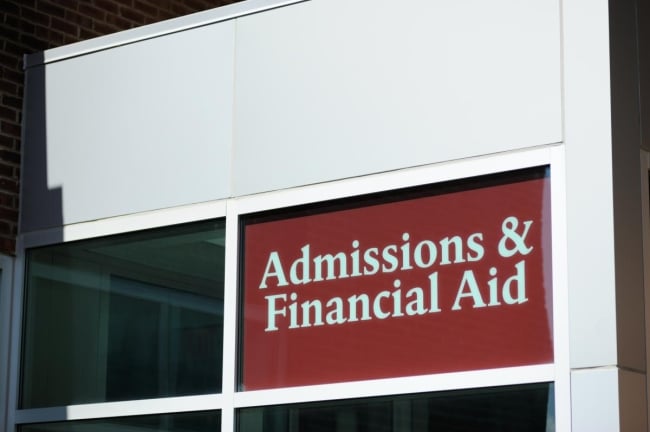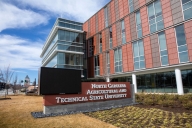You have /5 articles left.
Sign up for a free account or log in.

sshepard/Getty Images
When student aid was disbursed at the beginning of the fall semester, the financial aid office at the University of Texas at Arlington just couldn’t keep up. Emails and phone calls from students and parents poured into the office. And even though the employees were doing their best, some queries didn’t receive responses for a couple of weeks. As at many other colleges and universities across the country, the financial aid office was short-staffed.
Since mid-July, UT Arlington’s financial aid staff has lost eight employees -- over 20 percent of its workforce. And even though things have calmed since the beginning-of-the-academic-year rush, the office is still working to fill vacancies, said Karen Krause, executive director of the Office of Financial Aid, Scholarships and Veteran Benefits Processing at the university.
The staffing shortages at UT Arlington and other college financial aid offices aren’t necessarily unique. The United States is facing a widespread labor shortage, from nurses to pizza delivery drivers. In higher education, worker shortages extend across all facets of campus life, including at dining halls. But having fewer employees in the financial aid office can lead to consequences that extend beyond longer customer wait times.
“Not only does it decrease services to students, especially at a time when students need the most help, but understaffing can also have a big impact on a school’s ability to be in compliance with the litany of federal and state requirements,” said Justin Draeger, president and CEO of the National Association of Student Financial Aid Administrators.
That compliance is especially important now, with a new presidential administration that plans to crack down on institutions that aren’t adhering to federal student aid program rules. The Office of Federal Student Aid at the Department of Education recently announced that it’s reviving the Office of Enforcement -- which was deprioritized under the Trump administration -- to “strengthen oversight of and enforcement actions against postsecondary schools that participate in the federal student loan, grant and work-study programs.”
“In the end, schools can pay now -- by hiring and retaining staff -- or pay later, when they are found out of compliance and face possible federal fines and penalties,” Draeger said.
St. Petersburg College in St. Petersburg, Fla., has had around five vacancies in its financial aid office in the last year and is expecting another four or five openings within the next year. Their losses have come from both longtime employees who are retiring as well as younger employees moving on to other opportunities, according to Wayne Kruger, executive director of financial assistance operations.
The college is unable to compete in the current labor market that favors employees over employers, Kruger said, given that it can’t pay salaries that are comparable to what workers can find in the private sector, especially for jobs in the information technology field. At the same time, employers are losing a lot of institutional knowledge from employees who have spent decades working in financial aid at St. Petersburg.
“Financial aid is the type of profession where you really can’t just come off the street and hit the ground running,” Kruger said. “There are positions in higher ed that are more easily fillable than your specialized jobs like your financial aid people. We really can’t afford to bring in somebody that has no financial aid experience.”
While there aren’t quantitative data showing increased staffing shortages at financial aid offices, observational data point to it being a widespread trend, said Draeger. During a meeting last month for financial aid administrators in the Midwest, the majority of participants indicated they had vacancies in their offices. And over the last year, NASFAA has noticed an uptick in interest from institutions in the temporary staffing assistance that the association provides.
The financial aid offices at both UT Arlington and St. Petersburg have been thinking creatively about how to hire new employees and mitigate the challenges of the shortage. When financial aid employees leave St. Petersburg, Kruger takes it as an opportunity to make better use of technology and find ways to streamline and automate some of the office’s processes. They’re focused on cross-training employees -- especially throughout the pandemic and remote working -- so that several people are able to help out if a person in a key position leaves. The college has also found success in filling vacancies by hiring work-study students who are already well trained and familiar with the office.
Krause said she has been emphasizing the benefits that UT Arlington provides -- such as fully paid insurance and twice-a-week remote work -- as a way to attract prospective employees to the positions that need to be filled but have lower salaries. She’s also working with other offices at the university to figure out how their communications about outstanding balances and aid disbursements for the spring semester can be timely without leaving students with more questions than answers -- keeping the office from facing another overload of calls and emails in January.
“I think with the pandemic, and being away and coming back, it felt like students and parents were needier this fall to get that assurance of information,” Krause said. “I hope as we get further away from the pandemic, things will go back to a little bit more normal -- whatever normal is.”








